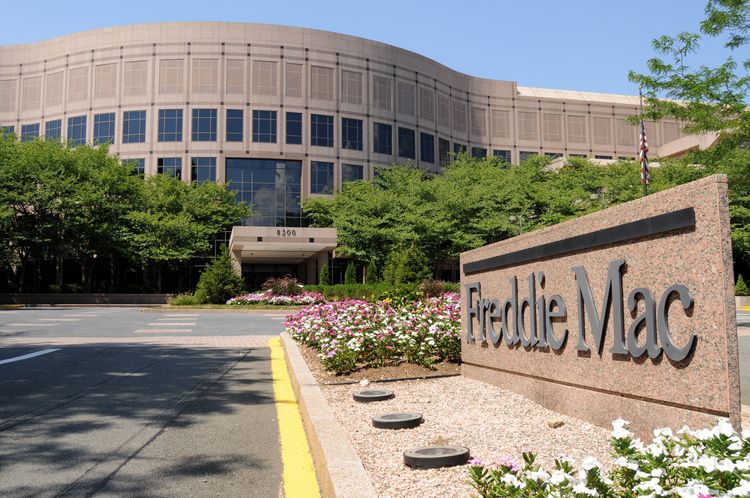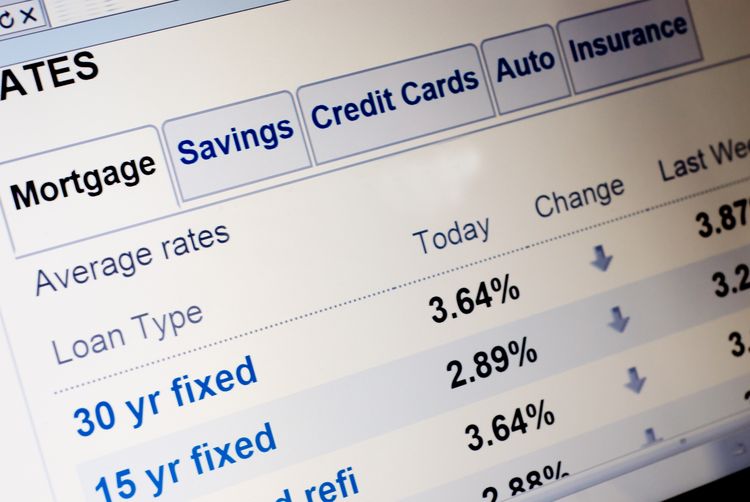Mortgage Rate Trends Over The Past 50 Years
“Those who cannot remember the past are condemned to repeat it” is an aphorism credited to Spanish philosopher George Santayana and commonly shortened as “History repeats itself.”
Examining the past cannot guarantee that the present and future remain carefree. Still, this type of vigilance can provide insights into historical drifts. In turn, watching trends can aid in decision-making and mistake-avoidance.
Wars and revolutions are the typical application of this aphorism. However, it is also logically applied to determining financial variabilities. If you can predict economic trends, you can better manage your financial expenditures and work out the best times to spend and save. This caution is especially true for significant expenditures, such as securing a home mortgage.

Freddie Mac And PMMS
The Federal Home Loan Mortgage Corporation, known as Freddie Mac, began its Primary Mortgage Market Survey (PMMS) in April 1971. The PMMS is a weekly survey of mortgage lenders to gather information on “most popular 30-year fixed-rate, 15-year fixed-rate and 5/1 hybrid amortizing adjustable-rate mortgage products.”
Freddie Mac releases the weekly results to track historical highs and lows for mortgage rates. These figures can help determine the best time to buy or refinance a home.

The Early Years
From 1971 to 1981, increasing inflation led to rising mortgage rates. When Freddie Mac began their surveying in 1971, 30-year fixed-rate mortgages drifted between 7.3% to 7.7%. Inflation raged over the following decade to a 9.5% rate. Consequently, mortgage lenders continued to increase their rates to keep up.
In response to the climbing inflation, the Federal Reserve System’s policy-making branch FOMC, the Federal Open Market Committee, increased the Federal Funds Rate. This rate is the target interest percentage that commercial banks charge another commercial bank when they borrow excess reserve cash overnight. FOMC examines economic conditions and sets the benchmark interest rate eight times a year.
By 1981, these rates drove 30-year fixed mortgage rates to a historical high of 18.6%. But by October 1982, the increasing of the Federal Funds Rate helped inflation drop down to normal levels. Single-digit home mortgage rates remained standard over the next thirty years. By November 2012, the decline reached a historic low of 3.3%.
Freddie Mac’s Forecast predicts the average 30-year fixed-rate mortgage will remain about 3.2% for 2021, increasing to 3.7% in 2022.

30-Year Fixed Rates vs. 15-Year Fixed Rates
More extended loan periods bring a higher risk of default. For this reason, 30-year fixed mortgage rates have consistently been slightly more elevated than 15-year interest rates.
Buyers who choose a 30-year fixed-rate mortgage pay higher lifetime interest charges. Then again, they can rely on a low, fixed monthly payment. In contrast, 15-year fixed-rate mortgages are repaid faster with less lifetime interest charges but at a higher monthly cost.
For example, calculating a mortgage loan amount of $300,000, a 15-year mortgage at the 2021 rate of 3.2% will cost $2,100.72 monthly with a total interest of $78,130.25. A 30-year mortgage at the 2021 rate of 3.8% will cost $1,397.87 monthly with a total interest of $203,233.94.
Comparatively, the monthly payment difference is $702.85 a month, but the homebuyer will pay $125,103.69 more interest with the longer mortgage.

Fixed-Rate vs. Adjustable-Rate Mortgages
Historically, 5-year adjustable-rate mortgages (ARM) averaged lower than the initial rates of a 30-year fixed-rate mortgage by almost 0.4%. These lower initial rates can benefit homebuyers with short-term savings.
However, refinancing to a fixed-rate loan may be the more economical option when those rates are lower than the ARM. The reason is that ARM rates adjust after the preliminary low-rate period. After that initial period, the agreed-upon index and margin will adjust the rate. The index is the variable determined by the benchmark rate, while the margin is fixed and added to the index. This rise is capped to a certain level for the life of the loan, as specified in the loan agreement.
Lower mortgage rates mean more affordable housing. An ARM can temporarily offset higher rates, but only if the buyer intends to refinance or sell before the initial period ends.
A convertible-ARM is another option, which converts the loan to a fixed-rate mortgage after a certain period without refinancing.
Mortgage refinancing is also a good option when interest rates are lower. Homeowners who refinance replace their own with another with a lower rate. Some homeowners who refinance use the monthly savings to pay down the principle to shorten the life of their loan and pay less interest. When mortgage rates are trending upward, refinancing is generally less beneficial.
